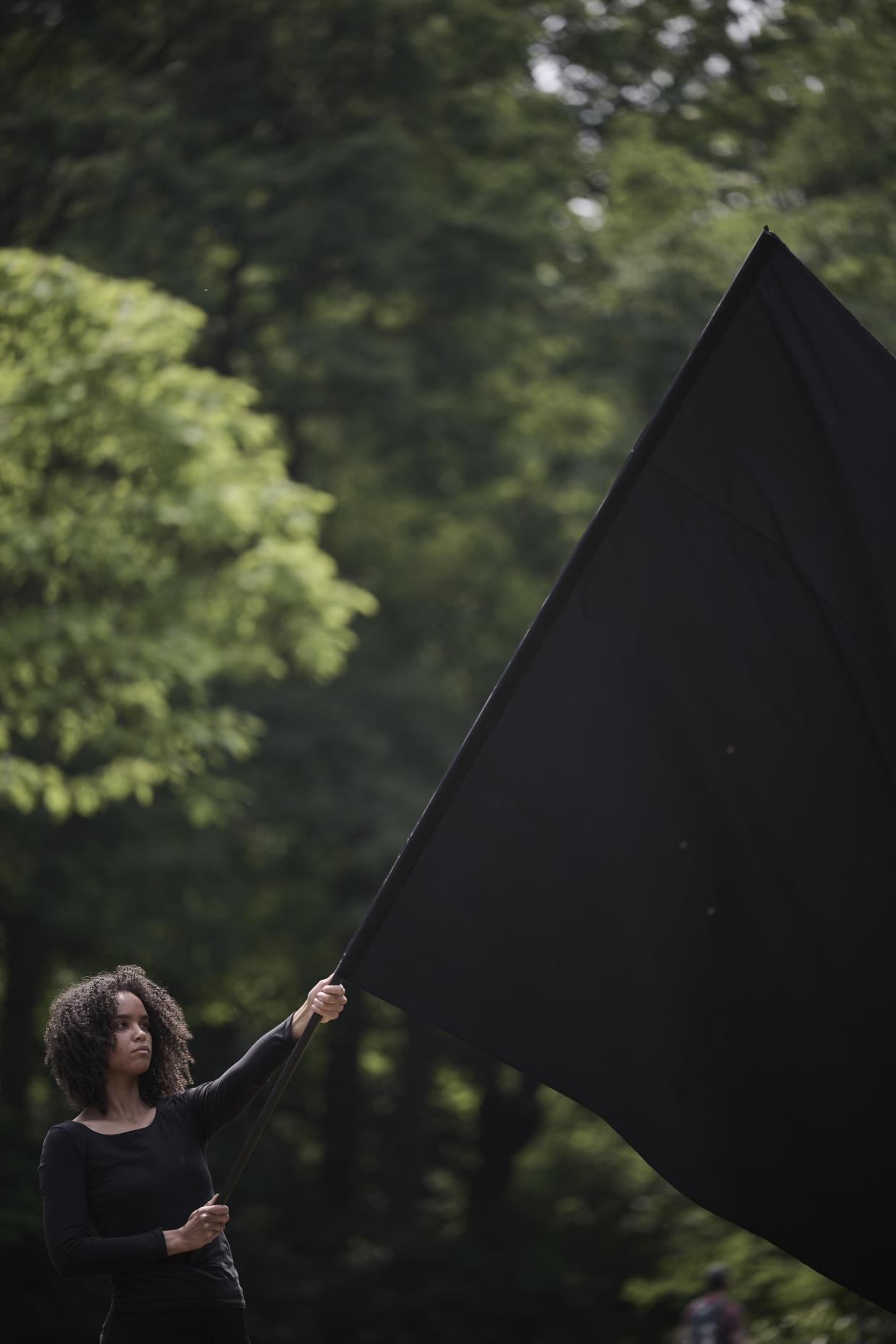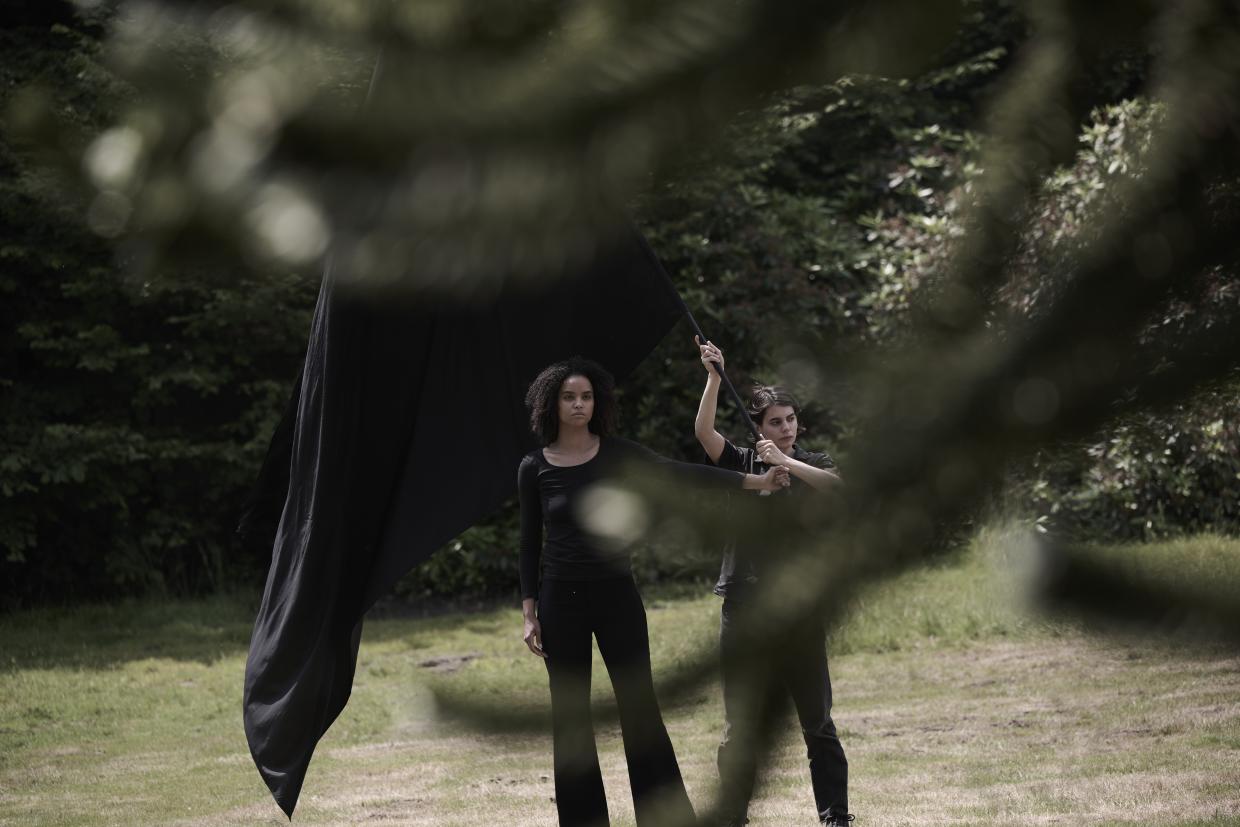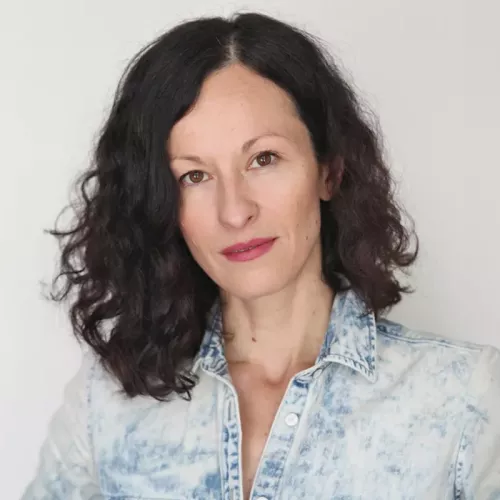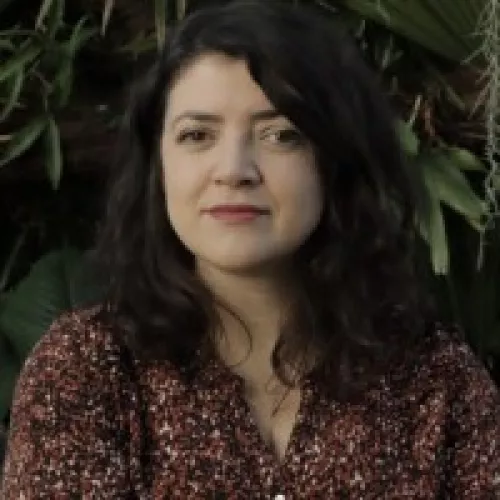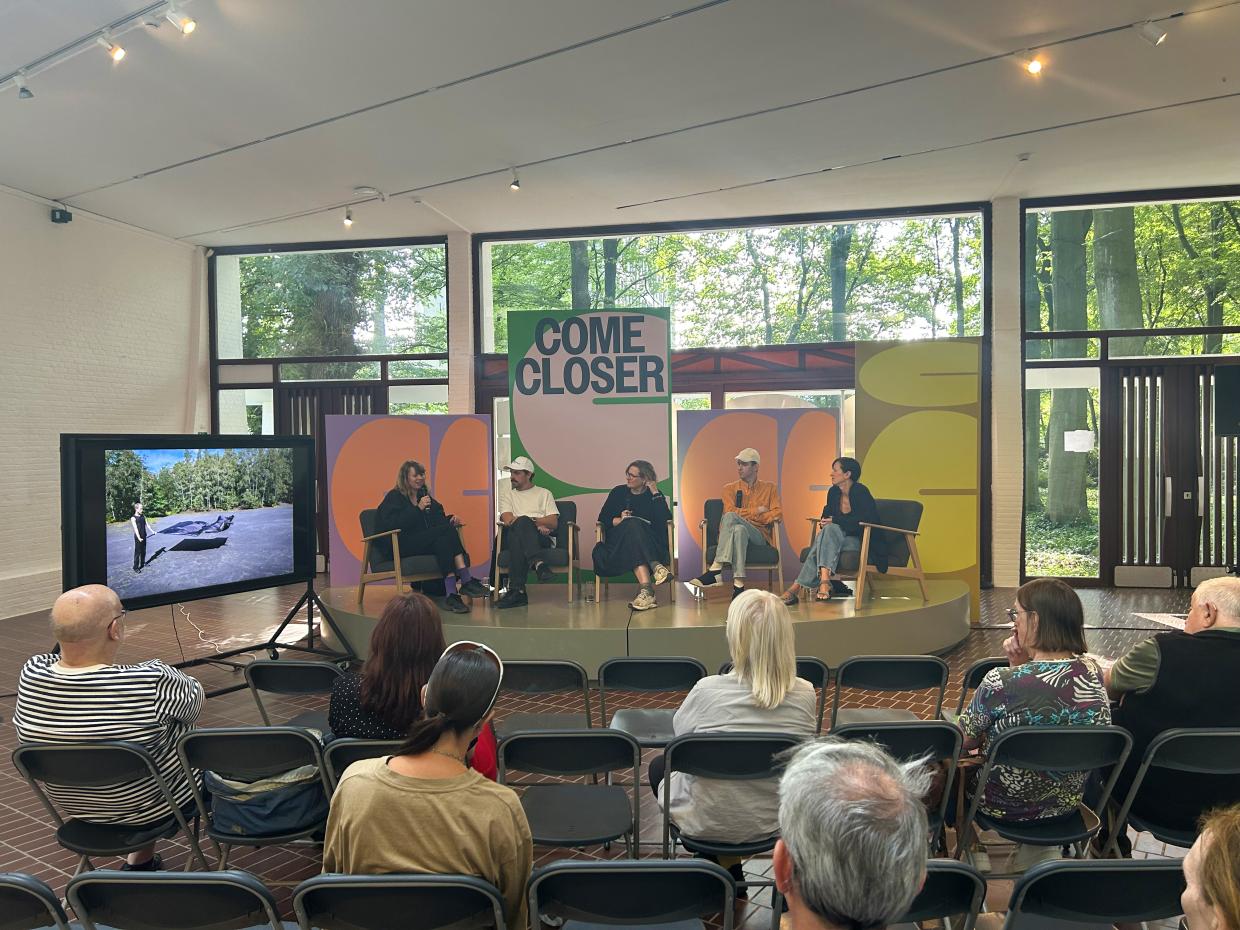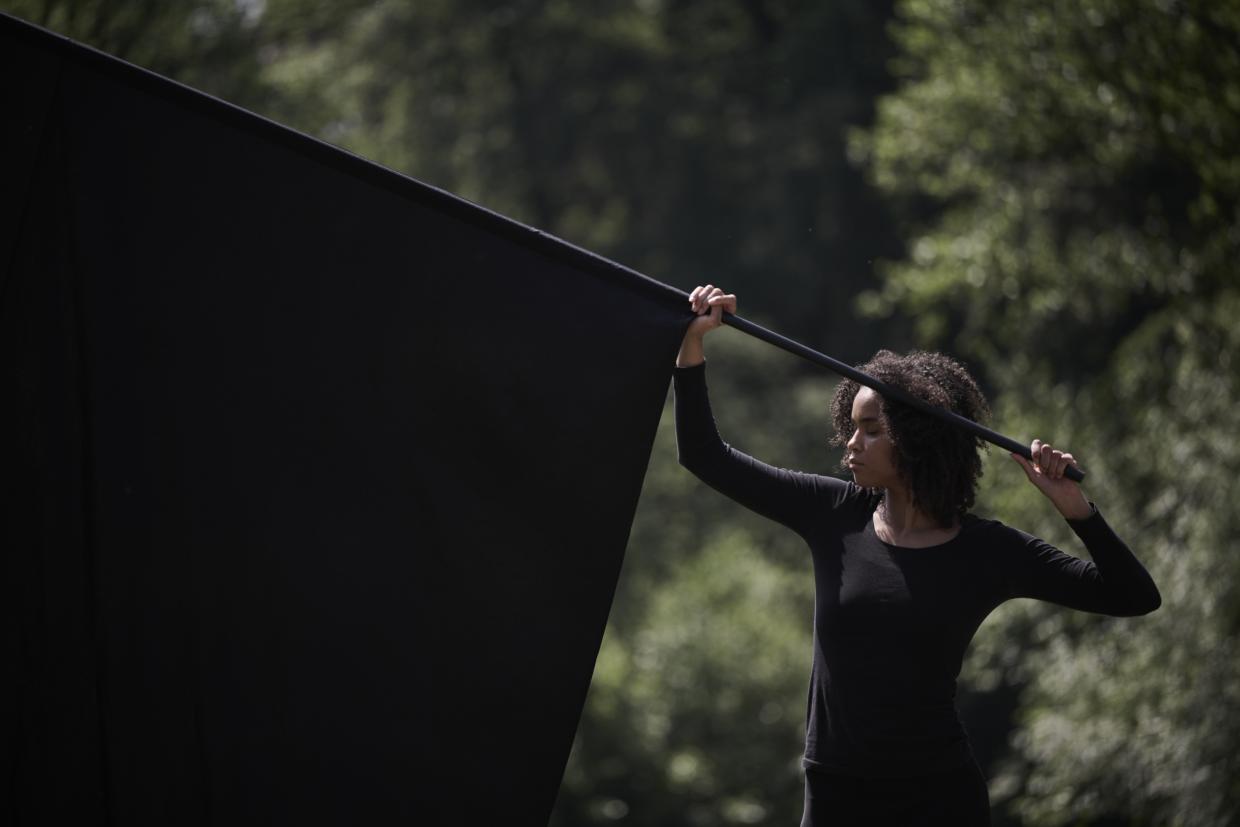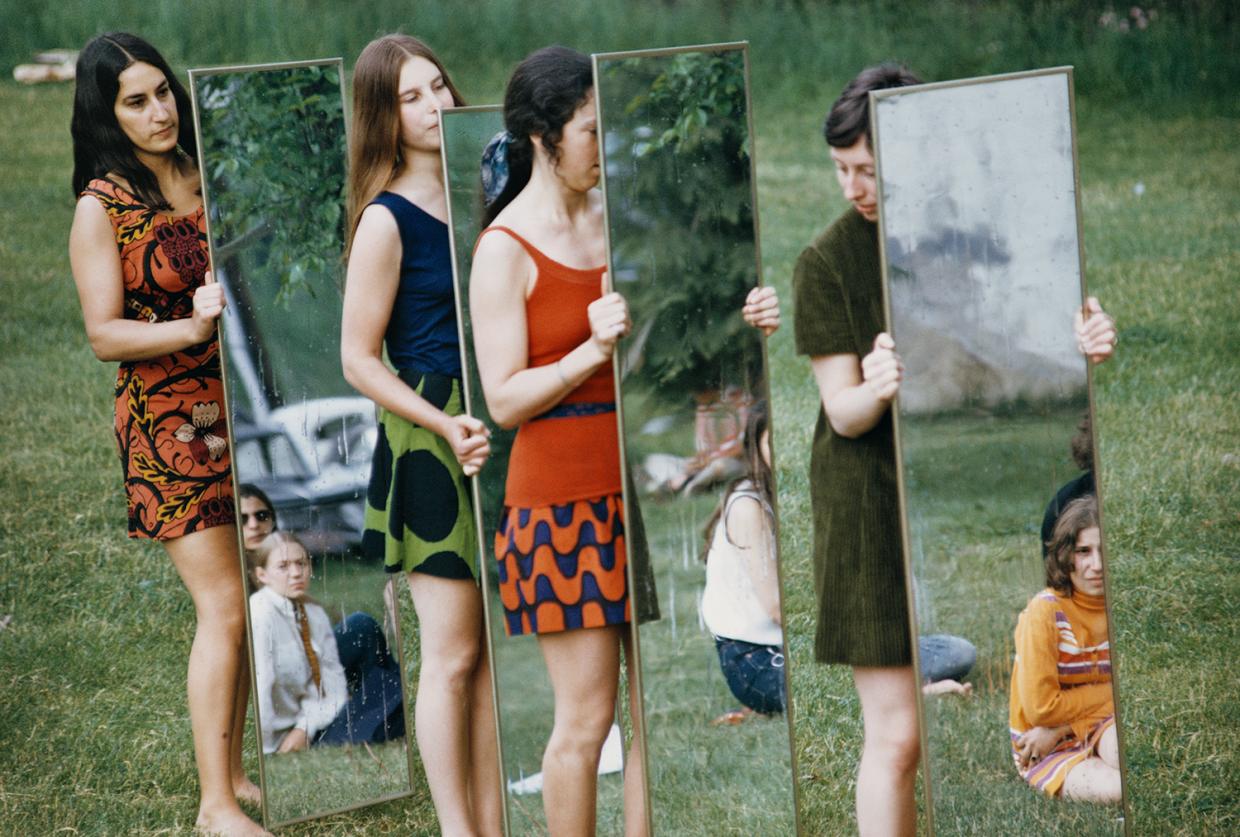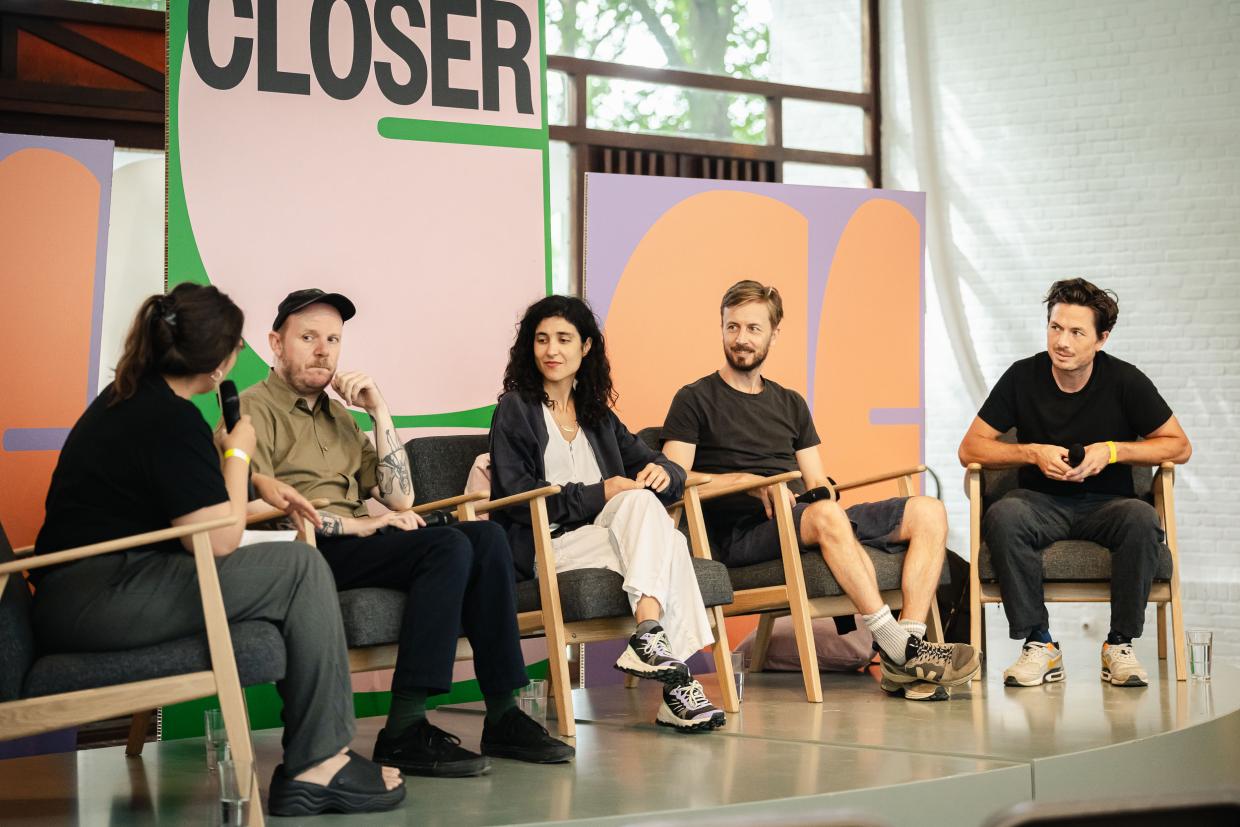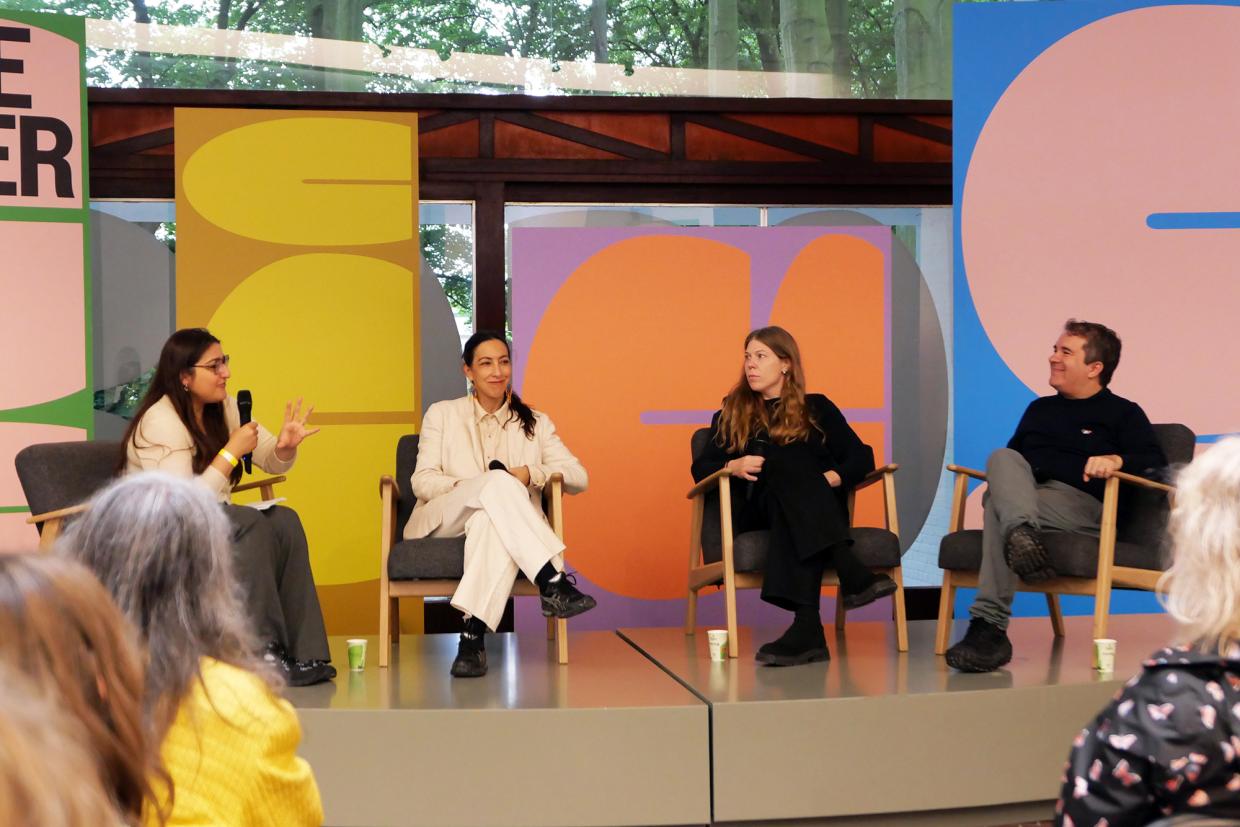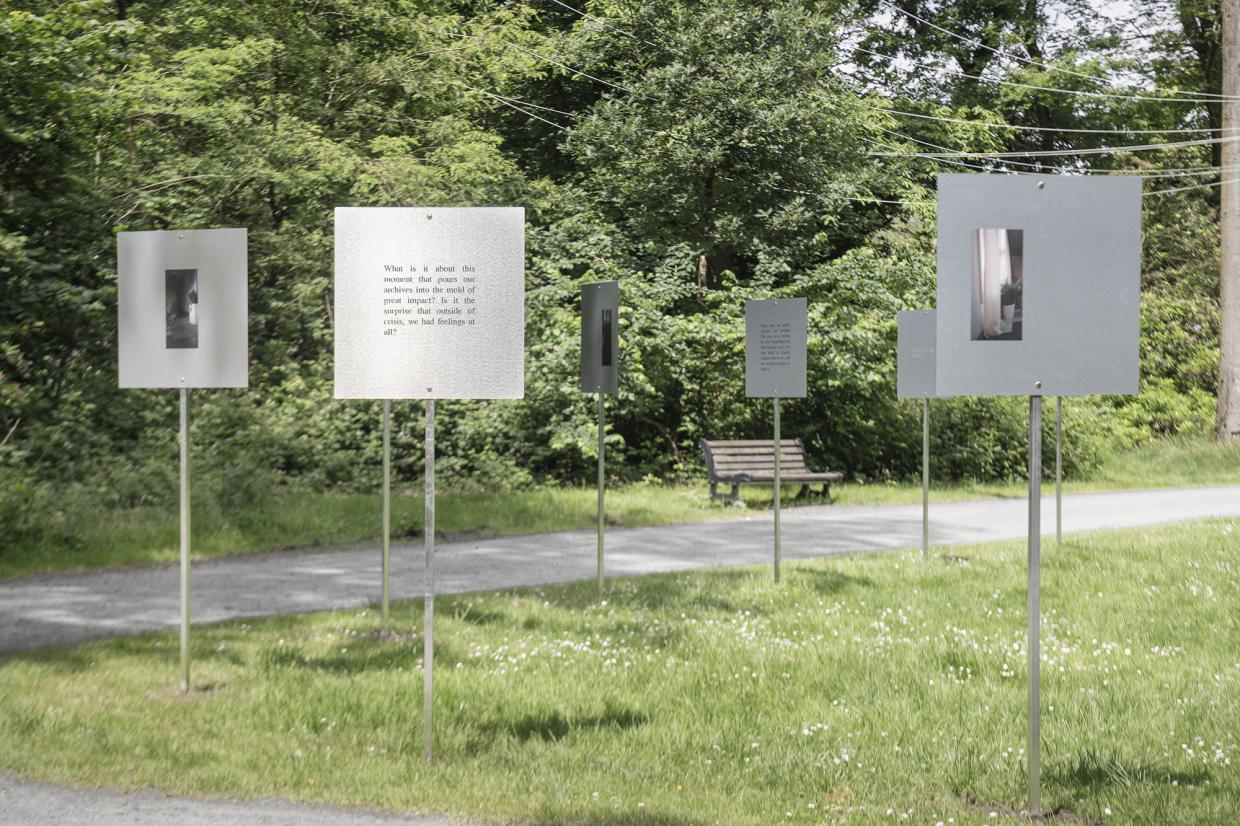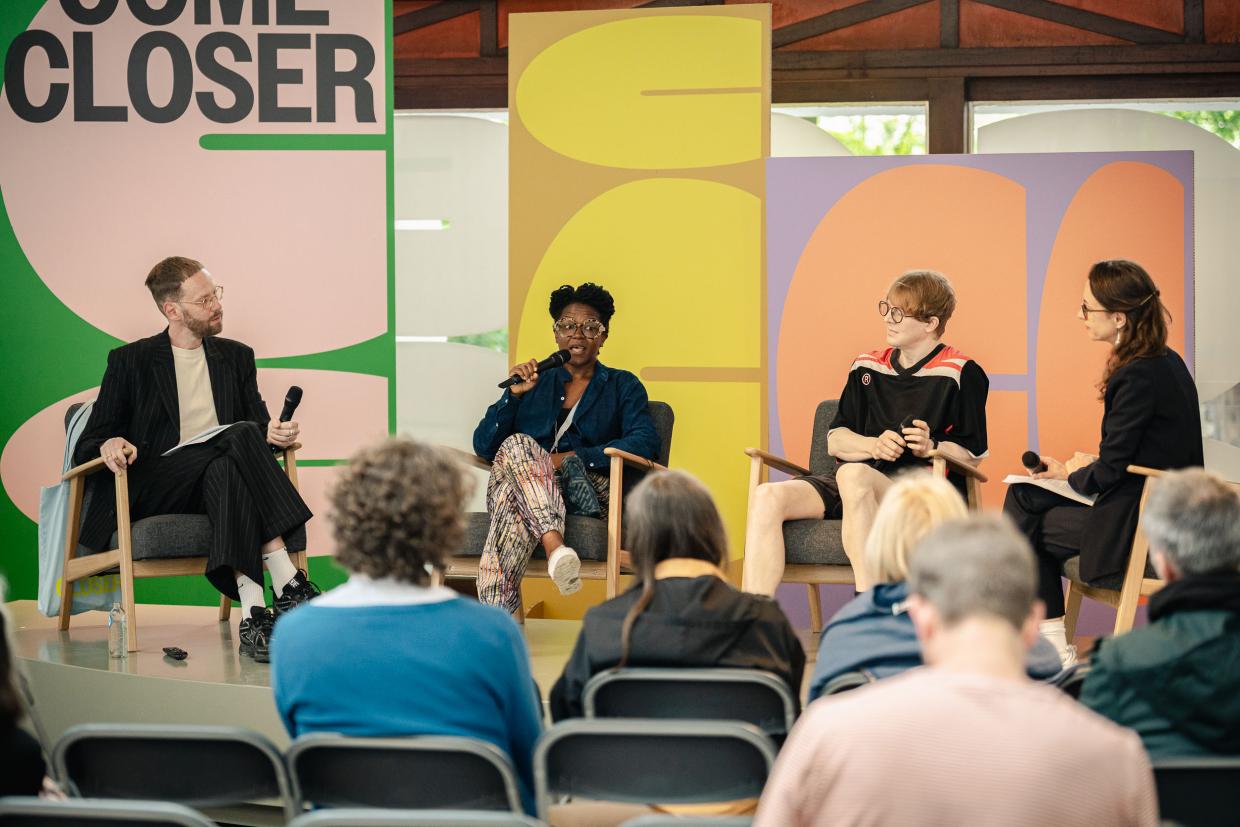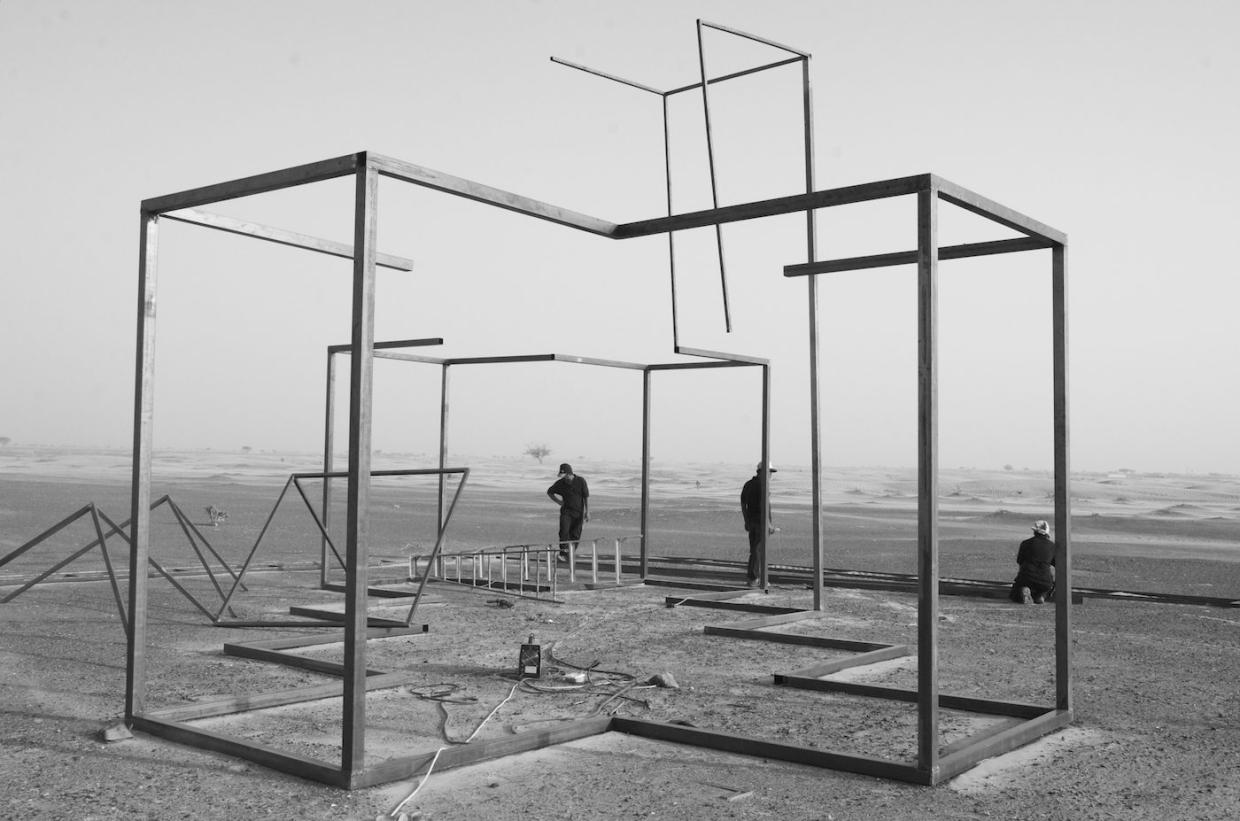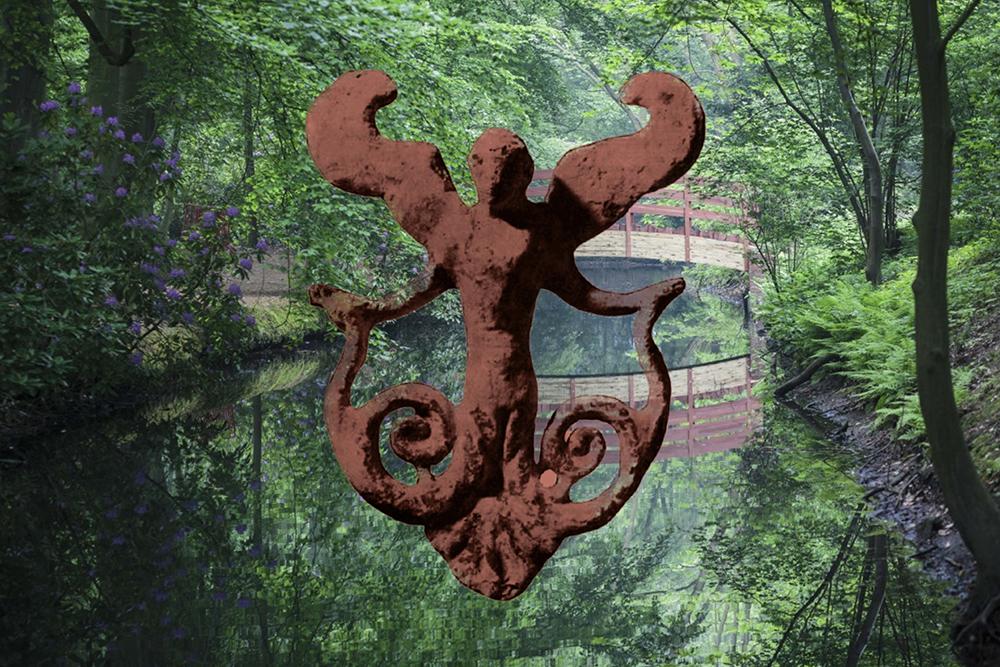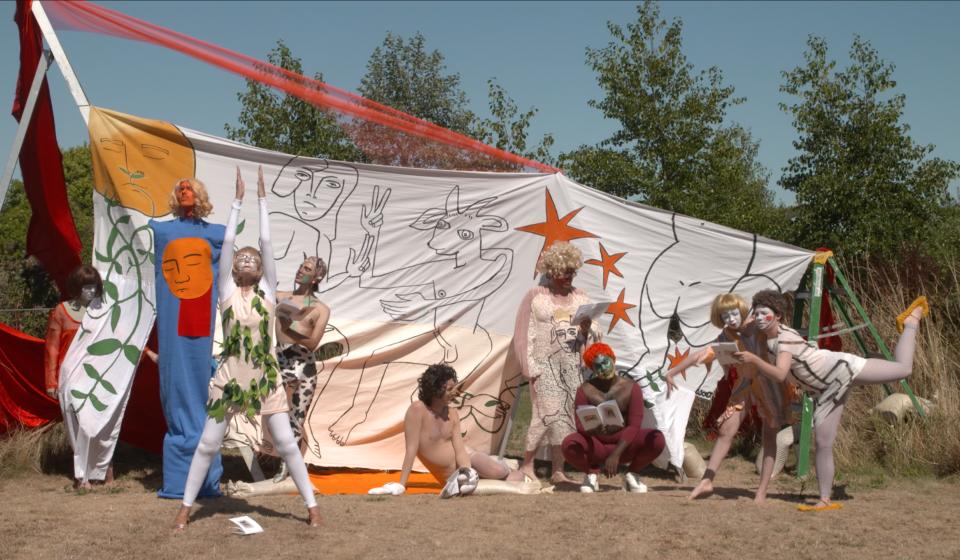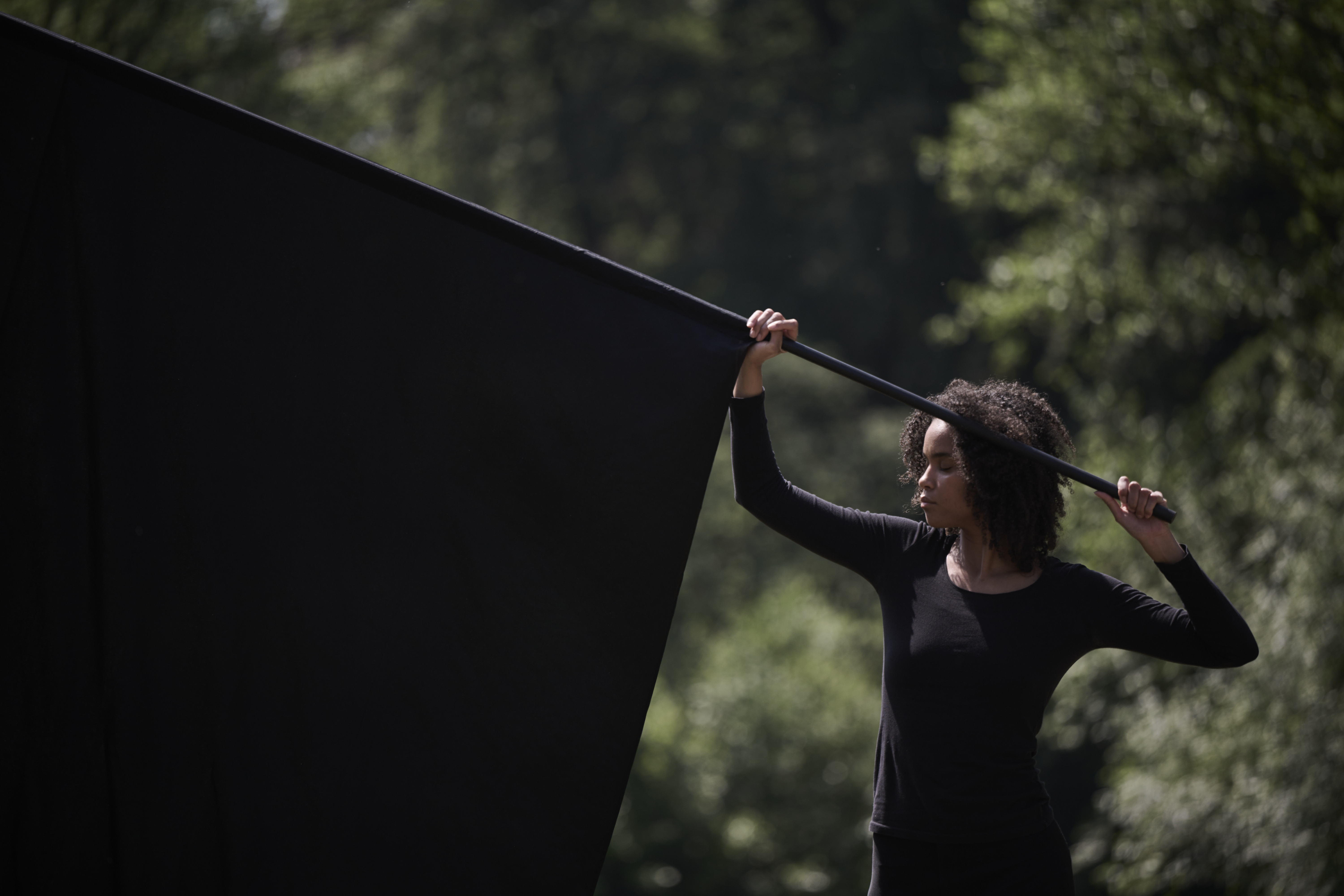
Black flags and collectivity
Curator Anna Stoppa in conversation with Ula Sickle
During the opening weekend of COME CLOSER, three performers took turns holding an enormous black flag in the wind. In total, this lasted for three hours. Ula Sickle will reprise this performance on August 31 in an ‘extended’ version with nine performers and three flags. Curator Anna Stoppa spoke with the artist about this remarkable work.
An evolving performance
Relay was a very serene and yet powerful performance to start COME CLOSER. What is the story behind it?
The original version of the piece dates back to 2018, for Nuit Blanche in Brussels. The festival then focused on May ’68, a time of intense protests in France and elsewhere: what remains of the protests fifty years later? I had six performers keep a large black flag in motion, all night long. Their movements passed between hope and powerlessness. As long as the flag moves, the protest continues.
The flag had already appeared in my work before. In the performance Extended Play, two large flags appeared for about 5 minutes halfway through the performance. In 2016, I brought the flag back during my exhibition at the Ujazdowski Castle Center for Contemporary Art in Warsaw. There the flag appeared for around ten minutes every hour. For Nuit Blanche, I decided to extend this gesture over an entire night.
The exhibition in Warsaw coincided with what was then called Czarny Protest (Black Protest) in Poland. Many women took to the streets at that time, dressed in black, to protest against the new abortion ban that further restricted women’s freedom.
The museum was located very close to the presidential palace where the demonstrations took place. So we decided to close the exhibition one day and join the protest. It was an important moment for me. I often work on social and political themes, but always from an artistic perspective. Suddenly, we were out in the real world with five large flags we had made for the occasion. Art and reality merged in a way I could not have imagined.
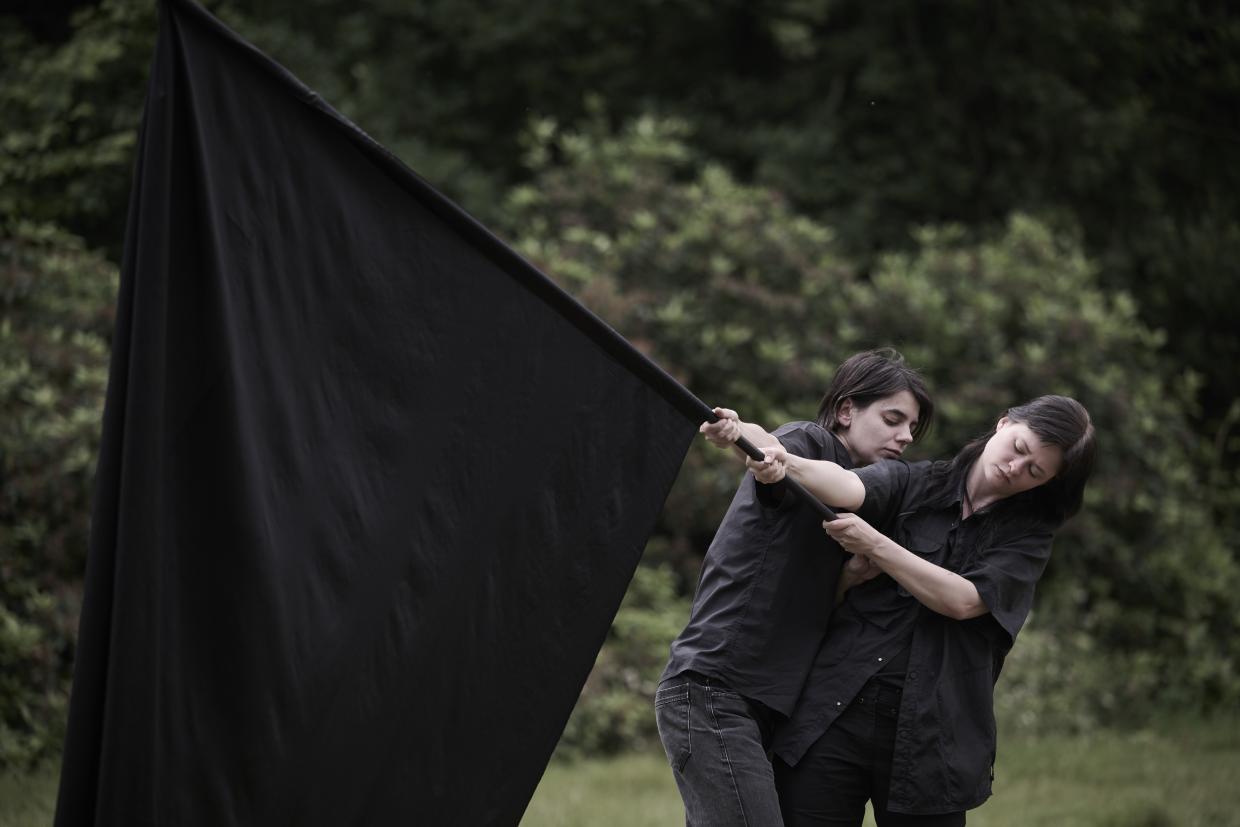
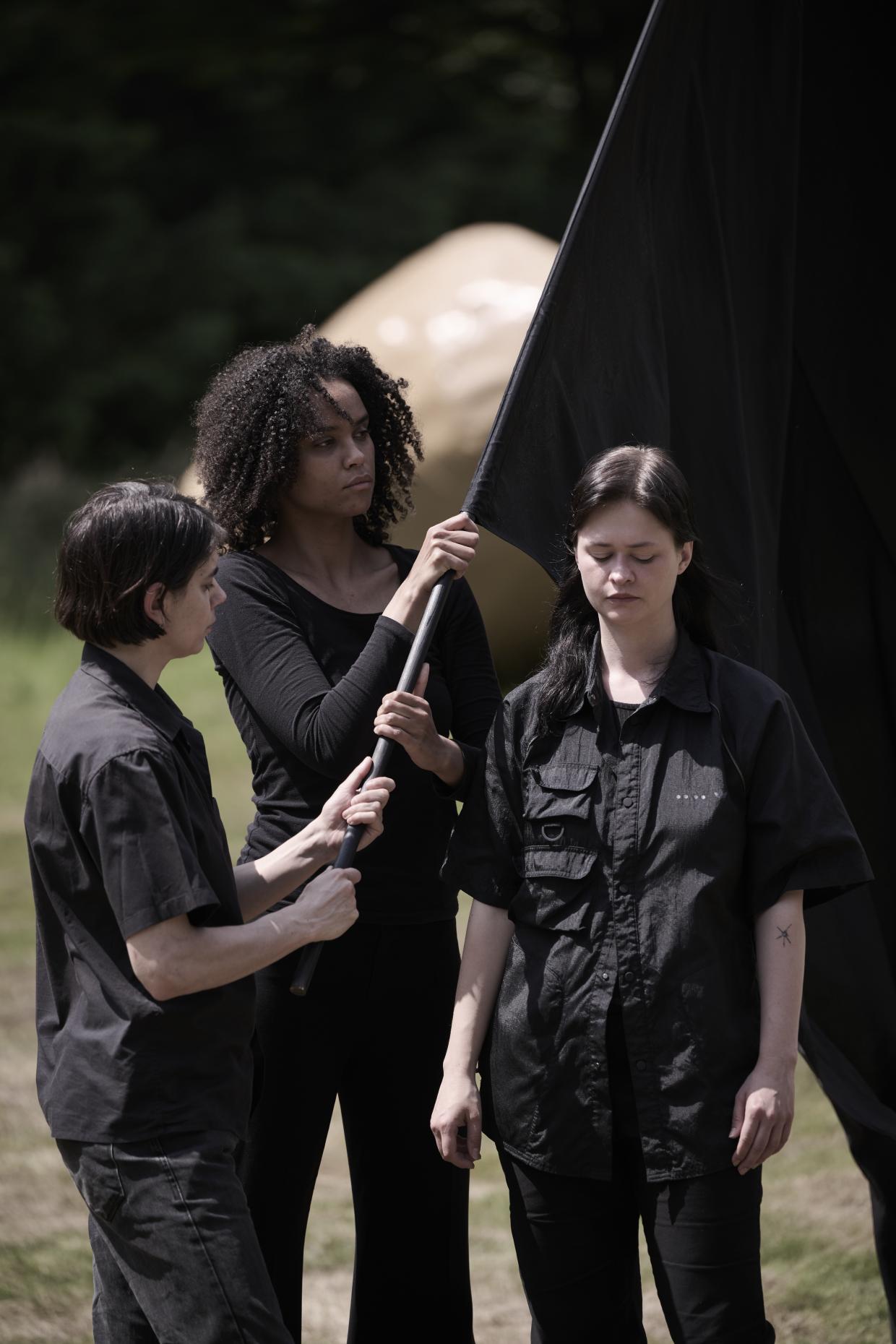
The performance evolved. During Nuit Blanche in 2018, Six performers took turns holding the flag high, for a total of six hours. This made the piece very powerful.
The following year, in 2019, Wiener Festwochen in Vienna asked me if I could create an outdoor version of the piece. A real challenge: the original piece is one long, slow, and continuous movement, the performers move in slow motion. This works well indoors, without wind. For an outdoor version, we had to approach it differently. We decided to use the wind as a partner to keep the flag afloat. Relay (unplugged) is the piece we performed the opening weekend at the Middelheimmuseum.
In Copenhagen, I was asked to perform Relay (unplugged) at ‘Metropolis’. This is an annual arts festival on Refshaleøen, a small island in the city, under full development. During the festival, site-specific artworks take over the entire island. The curator suggested I perform Relay (unplugged) there, with multiple flags. At first, I hesitated because this did not align with the initial concept. But then I thought back to the power of the protest in Poland. Multiple performers with multiple flags simultaneously: there was something to that.
It became a piece with three flags and nine performers, I was one of them. We positioned ourselves on a vacant lot that would later be built over. By temporarily occupying this piece of land, we highlighted the importance of non-privatized open space. Our gentle protest action made this piece of land visible: the field, the flowers, and the trees. We stayed there for three days, five hours each day, and almost became one with the land. Visible to everyone, including those who just took the boat or went for a walk.
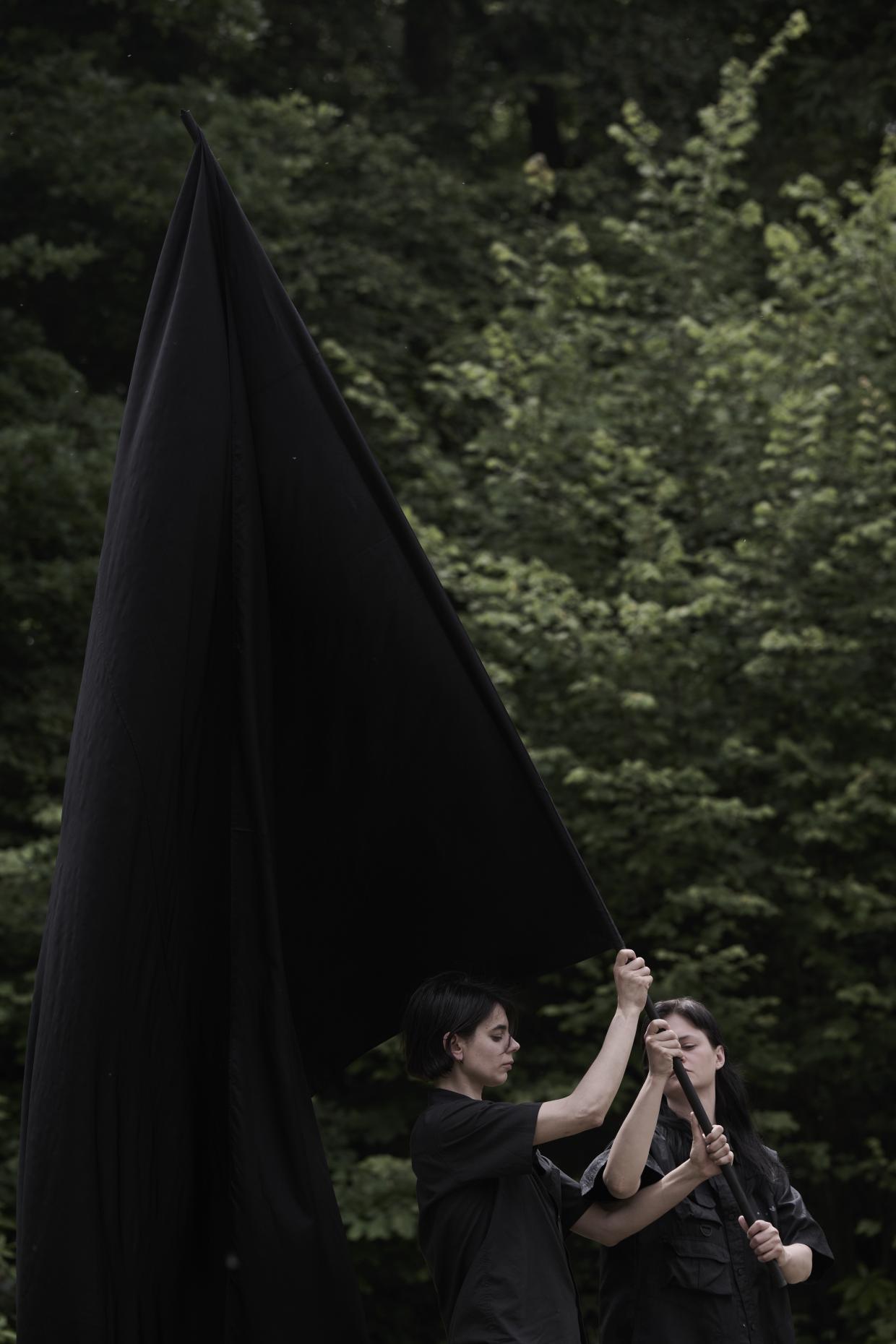
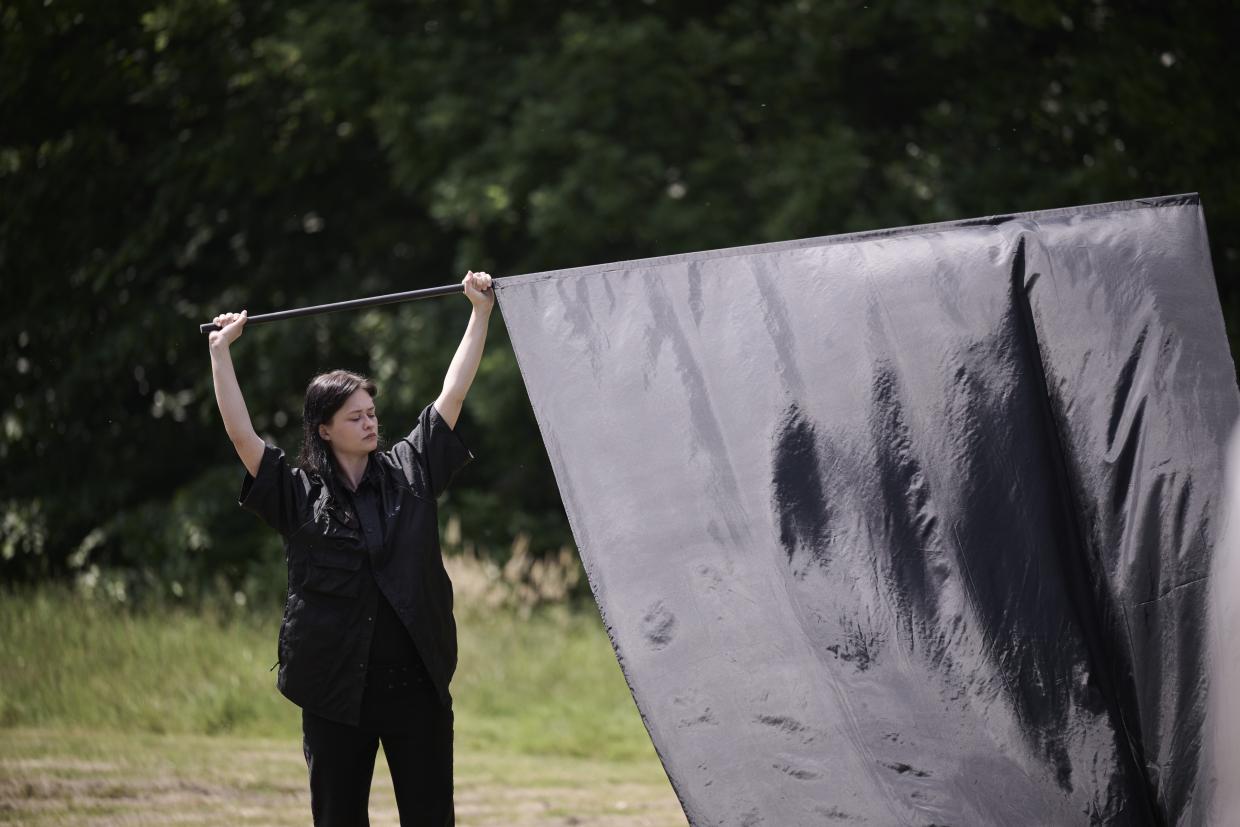
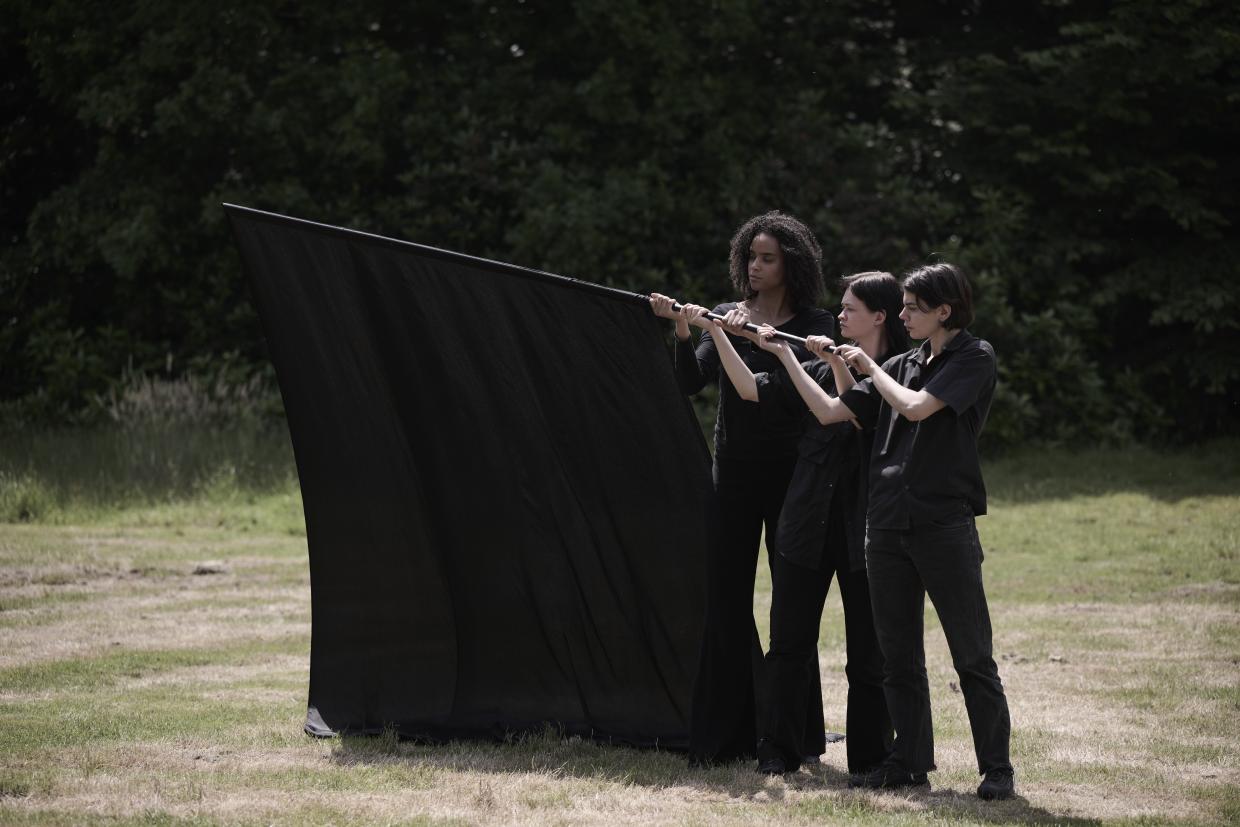
The power of the collective
This visibility is also interesting in the context of COME CLOSER. For instance, at the Middelheim Museum, the performance was visible from a distance. It wasn’t just the exhibition visitors who saw it, but also other walkers in the park.
This is similar to what happened in Copenhagen. People disembarked from the ferry and immediately encountered our work. It was impossible to miss the performance. They witnessed something akin to land art: something that temporarily became part of the land. Some came closer to watch, but for many, the performance was quite unexpected.
The performance is now part of the Flemish Art Collection. However, it had never been performed at the Middelheim Museum before. You felt it was very important to stage the performance now, during COME CLOSER. Why exactly?
The exhibition period coincides with several elections in Europe, and everywhere we see a shift to the right. The opening weekend felt like the perfect moment to once again raise the flag, as a signal or warning to preserve our acquired rights.
Nevertheless, the performance itself is not political. Besides the symbolism of the flag, it is primarily about the relay of the carriers. That’s why the piece has this title, Relay. It’s about people working together to keep the flag in motion. Every 10 minutes, one performer takes over from another, in complete silence. The strength lies precisely in this collective effort.
When this work was included in the Flemish Art Collection, we discussed with the museum how the work could be activated. The idea is that the performance can be carried out not only by performers but also by staff or volunteers. At any time, when it seems appropriate, for example, in response to what is happening in the museum or in politics.
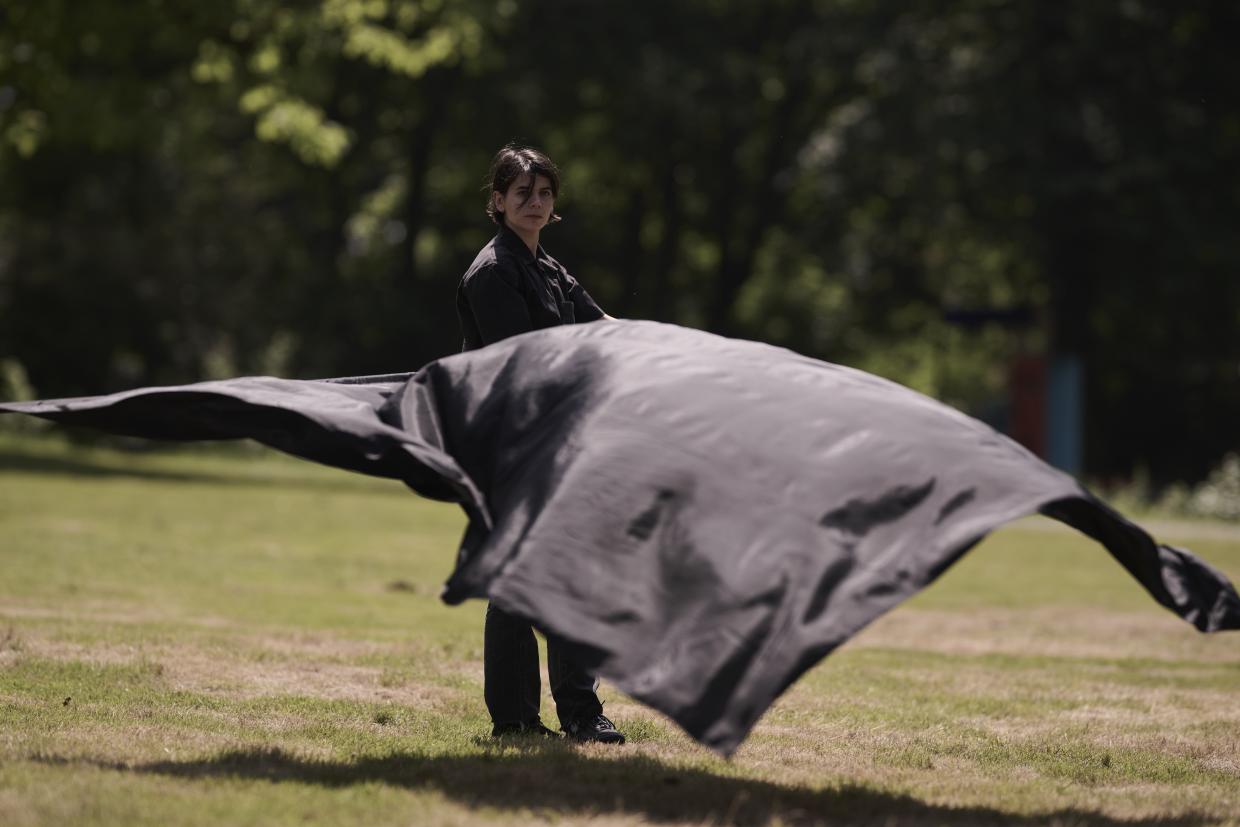
Relay in COME CLOSER
During your performance, there was a constant movement of both the performers and the audience. People stopped and began to watch in silence. Spectators sensed this intimate collectivity and became a part of it. In your next performance, Relay (extended) on August 31, there will be not one but three flags. Will this piece be very different?
I think the strength of the collective will be even more emphasized. Not only will there be nine performers instead of three, but there will also be a double action. The performers will not only listen to the wind to make the flags flutter but will also need to look at each other to coordinate their movements. This creates an additional bond.
The location is also very important. We perform the piece at the Middelheim Museum, which means that the continuous movement of the flags will become something sculptural, similar to the other sculptures in the park, not static but a kind of perpetuum mobile. At the same time, there is a second rhythm from the audience who pass by, watch, and then continue on their way. The changing audience becomes a temporary part of the collective each time.
How does the performance relate to the concept of COME CLOSER?
In the exhibition, the audience helps shape certain artworks. This is also true for Relay. There are so many meanings that you can give it your own interpretation. When the performers Mary and Amber held the flag together, it was no longer about protest but about the connection between them, full of tenderness and love. The meanings continually shift, depending on who is holding the flag, how the flag flutters, and how you personally choose to interpret it.
Today, everyone is always busy. The slowly fluttering flag, almost in slow motion, can momentarily still us and reconnect us with each other. It has an almost meditative effect. I would suggest to the audience to view it with an open mind, to take a moment, and let the different meanings come to them.
It’s wonderful to conclude the conversation with this. Relay is indeed an invitation to pay attention to all the themes the work touches upon in a different way. Not just with your mind, but with your body as well. Stop and watch, take a moment to be still. Without immediately moving on to the next work.
That’s certainly there — the suggestion or invitation to linger a bit. Spending some time and watching can even have a physical impact. That’s what happens when passers by stay to watch. It’s a contemplative performance that also tends to slow down the nervous system. And in some way, it temporarily brings us closer together.
Anna Stoppa, Antwerp, 28/06/24
